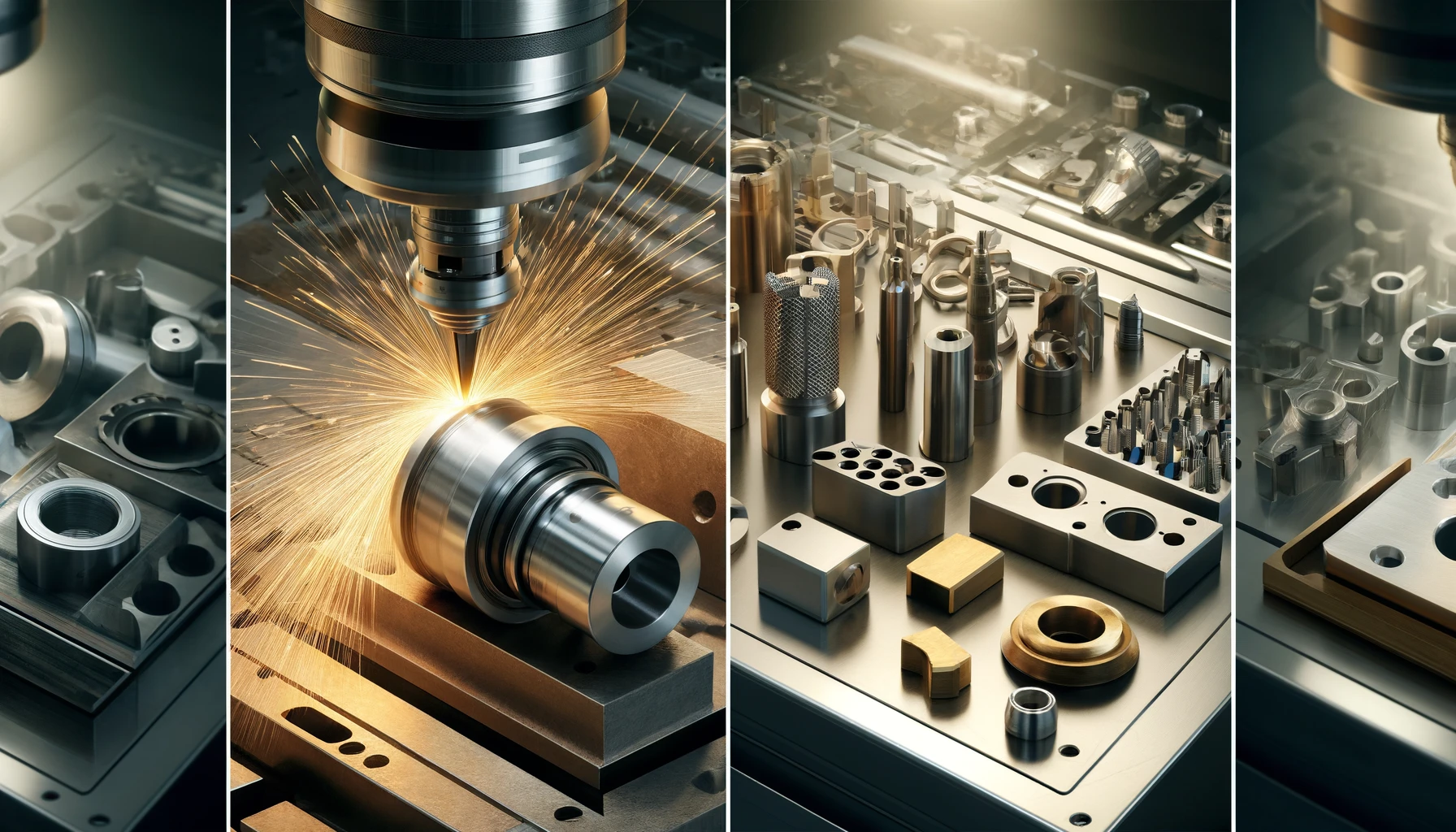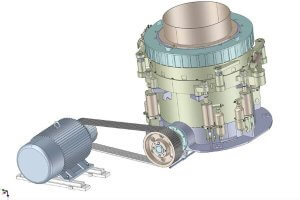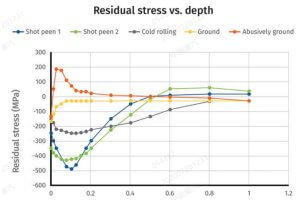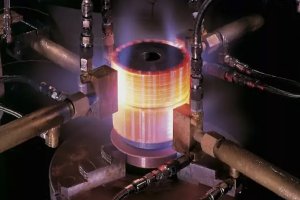The Role of CNC Machining in Material Enhancement
In engineering applications where materials are subjected to high stress, the choice and treatment of materials are crucial for the integrity and longevity of the final product. Precision CNC machining emerges as a transformative technology that not only shapes materials but also enhances their properties. This process can be tailored to compensate for inherent material weaknesses, thereby ensuring that components can withstand the demanding environments of their intended applications. This introduction sets the stage to explore how CNC techniques can be applied to improve material performance in high-stress conditions.
China Online CNC Machining Service
What Are Common Material Weaknesses Encountered in High-Stress Applications?
Materials used in engineering applications often face challenges such as brittleness, susceptibility to fatigue, and corrosion under stress. For instance, metals like aluminum may exhibit excellent weight-to-strength ratios but can suffer from fatigue over repeated use. Similarly, steel, while known for its strength, can corrode under harsh environmental conditions.
Table: Common Material Weaknesses and Their Impact
| Material | Weakness | Impact in High-Stress Conditions |
|---|---|---|
| Aluminum | Fatigue | Failure under cyclic loading |
| Steel | Corrosion | Degradation in harsh environments |
| Titanium | Cost | High expense limits use |
| Plastic | Creep | Deformation under constant load |
| Brass | Machinability | Difficulties in achieving precise forms |
| Copper | Conductivity | Overheating in electrical applications |
| Glass | Brittleness | Breakage under impact or stress |
| Composite Materials | Complexity in manufacturing | High production costs and variability in quality |
Each of these materials requires specific considerations during the CNC machining process to mitigate these weaknesses effectively.
How Does Precision CNC Machining Address These Material Weaknesses?
Precision CNC machining can address these weaknesses through precise control over the machining environment, including adjustments to cutting speed, feed rate, and cooling systems that prevent material degradation. Techniques like cryogenic machining or the use of specialized coatings on tools can extend the life of both the tool and the workpiece.
Technical Insights:
- Cryogenic Machining: Uses liquid nitrogen to keep the material at low temperatures during machining, which is particularly beneficial for materials like titanium that are prone to heat buildup.
- Coated Tools: Diamond-coated or titanium nitride-coated tools can enhance cutting performance and reduce wear, crucial for materials that are hard or abrasive.
Can Advanced CNC Techniques Improve the Fatigue Life of Engineered Materials?
Advanced CNC machining techniques are specifically designed to improve the fatigue life of materials by introducing residual compressive stress on the surface of the components and refining their microstructure. These modifications significantly enhance the durability and wear resistance of parts used in high-stress applications.
Table: Improvements in Material Fatigue Life Due to CNC Techniques
| CNC Technique | Material | Improvement in Fatigue Life | Application Example |
|---|---|---|---|
| High-speed machining | Aluminum Alloys | 30% increase | Aircraft fuselage panels |
| Ultrasonic machining | Titanium | 25% increase | Medical implants |
| Laser-assisted machining | Steel | 20% increase | Automotive components |
| Electrical Discharge Machining (EDM) | Hardened Steel | 15% increase | Tool and die components |
These techniques showcase the capability of CNC machining to enhance the structural integrity of materials tailored for specific high-stress environments.
What Are the Limits of CNC Machining in Compensating for Material Flaws?
Despite the advancements in CNC machining, there are inherent limitations when it comes to compensating for material flaws. These limitations are primarily due to the nature of the materials and the extent of the enhancement that machining can provide.
Key Limitations:
- Material Composition: CNC machining cannot alter the basic chemical composition of materials, which means that inherent material properties like melting point, thermal expansion, or base hardness remain unchanged.
- Internal Structure Modifications: While CNC machining can enhance surface properties and slightly modify near-surface microstructures, it cannot alter deep internal structures that might be crucial for certain engineering applications.
Strategies to Mitigate Limitations:
- Combination of Materials: Using composites or mixed materials where CNC machining can help combine the strengths of different materials.
- Post-Processing Treatments: Incorporating heat treatments, cryogenic treatments, or surface coatings post-machining to enhance the material properties beyond the capabilities of CNC machining alone.
Table: Limitations of CNC Machining and Mitigation Strategies
| Limitation | Impact on Material | Mitigation Strategy | Example Application |
|---|---|---|---|
| Fixed Material Composition | Limited enhancement scope | Use of composite materials | Aerospace components |
| Surface-only Modifications | Internal flaws remain | Post-processing treatments | Automotive gearboxes |
| High Cost of Precision | Economic feasibility | Selective application of techniques | Medical implants |
| Equipment Limitations | Geometric constraints | Advanced multi-axis machines | Complex machinery parts |
| Tool Wear | Degrades machining quality | Regular tool maintenance and replacement | High-volume production |
| Heat Accumulation | Material damage | Optimized cooling techniques | High-speed machining |
| Residual Stress | Potential for warping | Stress relief processes | Welded assemblies |
| Limited Scalability | Batch size restrictions | Automation and process optimization | Consumer electronics |
These details provide a clearer understanding of how CNC machining can be effectively utilized within its limitations, ensuring that engineering solutions are both practical and robust.
Case Studies: Examples of Successful CNC Applications in High-Stress Environments
To illustrate the effectiveness of CNC machining in overcoming material weaknesses, several case studies highlight its application in various industries where high-stress conditions are prevalent.
- Aerospace Industry: The aerospace sector often employs CNC machining to produce components from titanium—a material chosen for its strength-to-weight ratio but prone to machining difficulties. Precision CNC techniques have enabled the production of parts that are both lightweight and capable of withstanding the extreme conditions of aerospace environments.
- Automotive Industry: In automotive engineering, CNC-machined steel components are critical. Advanced CNC techniques have allowed for the production of durable engine components that can withstand high temperatures and pressures, significantly enhancing vehicle performance and reliability.
Performance Data Table:
| Industry | Component | Material | CNC Technique | Improvement Achieved |
|---|---|---|---|---|
| Aerospace | Engine Components | Titanium | High-speed machining | 40% increase in durability |
| Automotive | Transmission Gears | Steel | Laser-assisted machining | 30% reduction in wear |
| Marine | Hull Components | Aluminum | Ultrasonic machining | 50% improvement in corrosion resistance |
| Energy | Turbine Blades | Superalloys | Precision machining | 25% increase in efficiency |
| Medical | Orthopedic Implants | Titanium | Micro-machining | Enhanced surface finish for better biocompatibility |
| Electronics | Circuit Board Connectors | Copper | High-precision machining | Improved electrical conductivity |
| Construction | Load-bearing Beams | Steel | Structural machining | Increased load capacity |
| Sports Equipment | Bicycle Frames | Aluminum | 3D CNC machining | Lighter, stronger frames |
These case studies demonstrate the adaptability of CNC machining across different sectors, showcasing its role in enhancing material performance to meet specific, high-stress requirements.
Future Trends in CNC Machining for Material Enhancement
Looking ahead, the potential for CNC machining to compensate for material weaknesses is vast, with continuous advancements in technology paving the way for even more significant improvements.
Future Predictions:
- Smart Machining Systems: The integration of IoT and AI in CNC systems is anticipated to revolutionize how machining is performed, with smarter, more adaptive systems that can predict and adjust to material behavior in real-time.
- Advanced Material Handling: As new materials are developed, particularly composites and high-performance alloys
, CNC machining will evolve to handle these materials effectively, ensuring that their properties are optimally utilized in high-stress applications.
These advancements not only promise enhanced material properties but also offer the potential to transform traditional manufacturing processes, leading to more innovative solutions in engineering applications.
Other Articles You Might Enjoy
- Applications and Advantages of Bronze CNC Machining
1. Introduction: The Enduring Allure of Bronze in CNC Machining In this opening section, we explore the timeless appeal of bronze as a material for CNC machining. From its rich…
- Custom CNC Machining for Unique Applications: Exotic Material Options
Introduction to Custom CNC Machining and Exotic Material Options Custom Computer Numerical Control (CNC) machining epitomizes the pinnacle of advanced manufacturing procedures. It enables the transformation of a digital design…
- Choosing the Correct Material for High-Precision CNC Gear Machining
Introduction: Understanding CNC Gear Machining and The Importance of Material Selection The precision in gear manufacturing largely depends on Computer Numerical Control (CNC) technology - a systematic procedure implemented to…
- The Multifaceted Applications of Bead Blasting in CNC Machining
1. Introduction: Unveiling the Versatility of Bead Blasting In this opening section, we introduce the concept of bead blasting in CNC machining and set the stage for an in-depth exploration…
- The Science of Selecting CNC Machining Materials for High-Temperature Applications
Introduction to CNC Machining CNC (Computer Numerical Control) machining stands as a cornerstone in modern manufacturing, enabling the precise and automated production of complex parts. Its significance is particularly pronounced…
- Precision CNC Machining of Steel: High-Volume Production
Precision CNC Machining and High-Volume Production As an integral part of modern manufacturing processes, Precision Computer Numerical Control (CNC) machining brings about unmatched accuracy and consistency in the production of…









